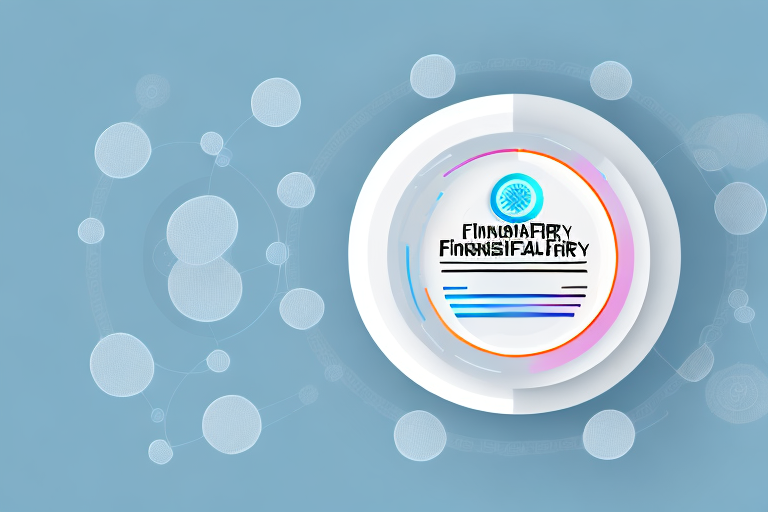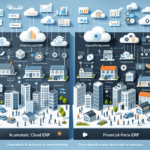FinancialForce ERP vs Priority ERP: An In-Depth Comparison
Enterprise Resource Planning (ERP) software is essential for businesses aiming to streamline operations, enhance productivity, and eliminate redundancies. Among the myriad of ERP solutions available, FinancialForce ERP and Priority ERP stand out as two prominent choices for organizations worldwide. This comprehensive comparison will delve into the features, benefits, and drawbacks of both FinancialForce ERP and Priority ERP, assisting you in making an informed decision for your business needs.
Understanding ERP Systems
ERP systems are integral to modern business process management, enabling organizations to automate and integrate their core operations. From order tracking and inventory management to billing, invoicing, and financial oversight, ERP software consolidates these functions into a centralized database. This integration provides real-time access to critical information, facilitating informed decision-making and boosting overall organizational efficiency.
Benefits of ERP Systems
- Cost Reduction: Automating processes eliminates manual tasks, saving both time and money.
- Enhanced Accuracy: Improved data accuracy reduces errors and further promotes cost savings.
- Improved Customer Satisfaction: Real-time information access enables quick responses to customer inquiries and personalized service.
- Data-Driven Decision Making: Access to real-time data aids in making informed strategic decisions.
FinancialForce ERP: A Comprehensive Overview
FinancialForce ERP is a cloud-based solution built on the Salesforce platform, offering a robust suite of features including financial management, procurement, project management, resource management, and billing and revenue recognition. Its dynamic and customizable interface allows businesses to tailor the software to their specific needs.
Key Features of FinancialForce ERP
- Project Management
- Billing and Revenue Recognition
- Financial Management
- Resource Management
- Procurement Management
- Real-Time Insights and Reporting
Advantages of FinancialForce ERP
- Seamless Salesforce Integration: Easily integrates with other Salesforce products like Sales Cloud and Service Cloud, enhancing data sharing and collaboration.
- Real-Time Reporting and Analytics: Provides valuable insights into business operations and financial performance.
- Extensive Project Management: Suitable for service-based industries requiring detailed project oversight.
Drawbacks of FinancialForce ERP
- Dependence on Internet Connectivity: As a cloud-based solution, reliable internet access is essential.
- Targeted at Mid-Sized Businesses: May lack some features required by larger enterprises.
- Complex Setup: Initial configuration can be time-consuming and may require additional resources.
Priority ERP: A Comprehensive Overview
Priority ERP is a versatile ERP solution catering to businesses of all sizes, offering robust features in financial management, manufacturing operations, service management, and customer relationship management (CRM). Its customizable workflows and processes make it adaptable to diverse business requirements.
Key Features of Priority ERP
- Financial Management
- Sales Management and CRM
- Procurement and Inventory Management
- Project Management and Production Process Management
- Business Intelligence and Real-Time Reporting
Advantages of Priority ERP
- Scalability: Easily adapts to the evolving needs of a growing business.
- Customization: Offers a dedicated customization team to tailor the software to specific business needs.
- Cost-Effective: Generally more affordable than some competitors, making it suitable for small to medium-sized enterprises.
Drawbacks of Priority ERP
- Complex User Interface: May require a dedicated team for setup and customization.
- Limited Advanced Features: Lacks some advanced functionalities like comprehensive billing and revenue recognition.
- Potentially Higher Implementation Costs: The overall cost may be higher for businesses with limited budgets.
Feature Comparison: FinancialForce ERP vs Priority ERP
Pricing Models
FinancialForce ERP operates on a subscription-based pricing model, with costs varying based on the size of the organization and required features. In contrast, Priority ERP offers flexible pricing options, including annual licensing fees and cloud-based installment plans. Generally, Priority ERP tends to be more affordable, making it a viable option for businesses with budget constraints.
Implementation Process
Both FinancialForce ERP and Priority ERP provide comprehensive implementation services. FinancialForce offers project oversight, configuration, data migration, and user training. Priority ERP features a streamlined implementation with dedicated support for installation, configuration, and data migration. The implementation timeline for both solutions depends on the business's size and complexity.
Customization and Integration
Customization is a strong suit for both ERP solutions. FinancialForce allows businesses to add new fields, object types, and workflows to its dynamic interface. Priority ERP provides a dedicated customization team to guide businesses in tailoring the software to their specific needs. Regarding integration, FinancialForce ERP integrates seamlessly with other Salesforce applications, while Priority ERP offers an open API for linking with third-party solutions and enterprise software like SAP and Oracle.
Security Measures
Security is paramount for both FinancialForce ERP and Priority ERP. FinancialForce employs multi-factor authentication, SSL encryption, and role-based security to protect sensitive data. Similarly, Priority ERP uses access permissions, secure login protocols, and data encryption to ensure data integrity and security.
Scalability
Both ERP systems are designed to scale with your business. FinancialForce leverages the robust Salesforce infrastructure to facilitate easy scaling, while Priority ERP offers a modular system allowing businesses to add or remove modules as needed. Priority ERP is particularly recommended for organizations seeking a cost-effective solution that can grow alongside their operations.
Pros and Cons: FinancialForce ERP vs Priority ERP
FinancialForce ERP
- Pros:
- Seamless integration with Salesforce products
- Comprehensive financial and project management features
- Real-time analytics and reporting
- Excellent customer support with regular updates
- Cons:
- Dependence on internet connectivity
- Primarily designed for mid-sized businesses
- Challenging setup and configuration process
Priority ERP
- Pros:
- Highly customizable and scalable
- Comprehensive financial and CRM features
- Cost-effective for small to medium-sized businesses
- Robust integration capabilities through open API
- Cons:
- Complex user interface requiring dedicated setup
- Limited advanced features compared to some competitors
- Potentially higher implementation costs
Security Measures: Ensuring Data Protection
Data security is a critical consideration when selecting an ERP system. Both FinancialForce ERP and Priority ERP implement robust security protocols to safeguard sensitive business information.
FinancialForce ERP Security
- Multi-Factor Authentication (MFA)
- SSL Encryption
- Role-Based Access Control
- Regular Security Audits
Priority ERP Security
- Access Permissions Management
- Secure Login Protocols
- Data Encryption
- Compliance with Industry Standards
Integration Capabilities: Enhancing Business Operations
Effective integration is essential for maximizing the capabilities of your ERP system. Both FinancialForce ERP and Priority ERP offer extensive integration options to connect with other business applications.
FinancialForce ERP Integration
- Built on the Salesforce platform, enabling easy integration with Salesforce apps like Sales Cloud and Service Cloud
- Supports integration with various third-party applications through Salesforce AppExchange
- APIs available for custom integrations
Priority ERP Integration
- Open API for connecting with third-party solutions
- Integrates with enterprise software such as SAP and Oracle
- Supports custom integration projects to meet unique business needs
Customer Support and Training
Effective customer support and training are vital for successful ERP implementation and usage. Both FinancialForce ERP and Priority ERP provide comprehensive support services to assist businesses.
FinancialForce ERP Support
- 24/7 customer support via email, chat, and phone
- Dedicated support teams for troubleshooting and assistance
- Regular software updates and improvements
Priority ERP Support
- Real-time assistance through chat, email, and phone
- Customized training programs to maximize software potential
- Ongoing support for continuous improvement
Scalability: Growing with Your Business
As your business evolves, your ERP system should adapt to meet new challenges and requirements. Both FinancialForce ERP and Priority ERP offer scalable solutions to accommodate business growth.
FinancialForce ERP Scalability
- Leverages Salesforce's robust infrastructure for seamless scaling
- Flexible modules and features that grow with your business needs
- Cloud-based platform ensures easy access and scalability
Priority ERP Scalability
- Modular system allows for the addition or removal of functionalities as needed
- Supports growth from small businesses to large enterprises
- Cost-effective scaling options suitable for expanding organizations
Conclusion: Which ERP Solution is Right for Your Business?
Choosing between FinancialForce ERP and Priority ERP hinges on your organization's specific needs, size, and budget constraints. FinancialForce ERP is ideally suited for service-based businesses that require extensive project and financial management capabilities, particularly those already utilizing Salesforce products. Its robust integration and real-time analytics make it a powerful tool for enhancing operational efficiency.
On the other hand, Priority ERP offers a versatile, all-in-one solution that is both affordable and scalable, making it an excellent choice for small to medium-sized enterprises seeking comprehensive financial and CRM features. Its customizable workflows and strong integration capabilities provide the flexibility needed to adapt to diverse business environments.
Ultimately, both ERP systems are capable of driving significant improvements in business operations. By thoroughly assessing your organization's requirements and evaluating the strengths and limitations of each solution, you can select the ERP system that best aligns with your strategic objectives and supports your growth trajectory.
Further Resources
For more detailed insights and industry comparisons, consider consulting the following reputable sources:
- Gartner's Market Guide for ERP
- Capterra's Review of FinancialForce ERP
- Software Advice's Profile on Priority ERP
Final Thoughts
Investing in the right ERP system is a crucial step towards achieving operational excellence and sustained growth. Both FinancialForce ERP and Priority ERP offer unique advantages tailored to different business needs. By leveraging the strengths of these solutions and aligning them with your organizational goals, you can optimize your business processes and drive success in a competitive marketplace.




















